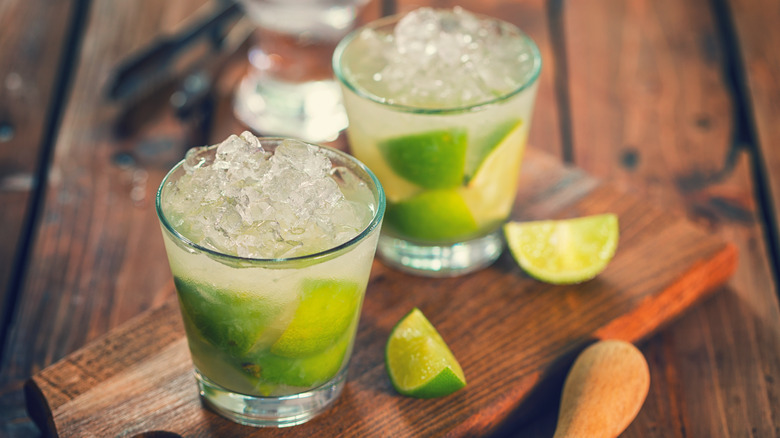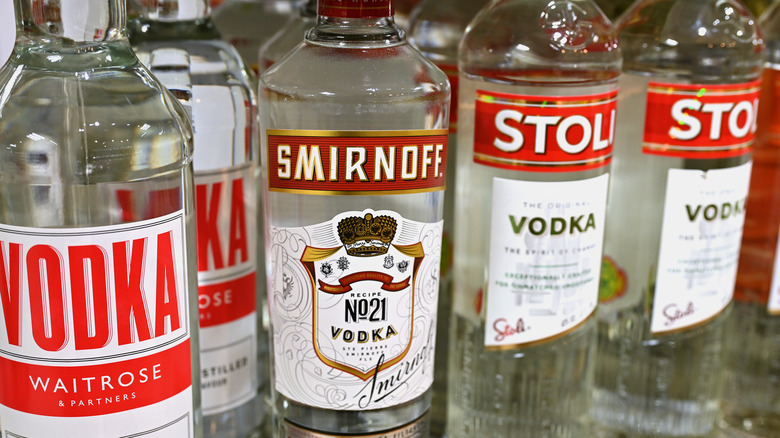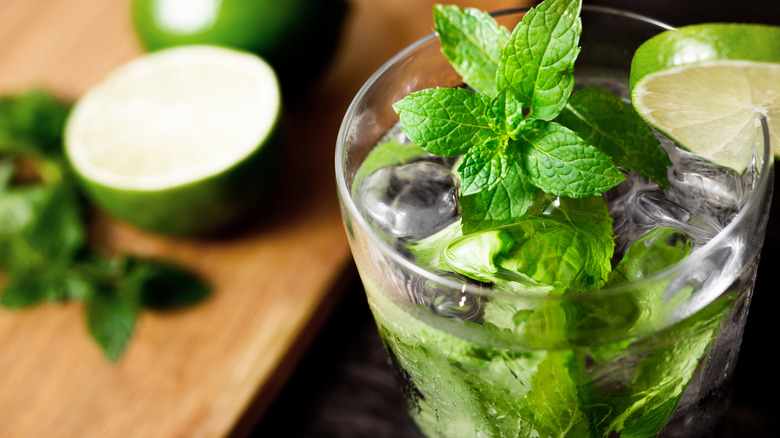The Boozy Difference Between Caipirinha And Caipiroska Cocktails
No cocktail in Brazil is more popular than the caipirinha, although the similarly named caipiroska — a variation of the former drink — is also enjoying its moment in the spotlight. There's only one difference between the two cocktails: the base liquor. When making a caipirinha, a Brazilian sugar-cane liquor known as cachaça is paired with sugar and lime to produce a refreshing beverage often compared to the mojito. The caipiroska also calls for lime and sugar, but vodka replaces cachaça as the liquor of choice.
The caipiroska, also referred to as caipirovska, has emerged as a favorite not just in Brazil, but also in other South American countries like Uruguay and Argentina. Spinoffs of the traditional caipirinha have long been popular, and swapping out the alcohol is a common twist. For example, rum giant Bacardi was behind the caipirissima, a cocktail similar to the caipirinha, but made with its classic product. The brand of the liquor is quite significant in the caipiroska as well.
Smirnoff has become the preferred choice in some caipiroska recipes. When this drink is made with premium vodka brands, it is customary in Brazil to add the terms especial (special) or luxo (luxury) to the drink's name.
How to make the caipirinha and caipiroska cocktails
The caipirinha, invented in the early decades of the 20th century (reportedly in 1918), remains unaffected in sales by the rising popularity of vodka. This traditional Brazilian-born cachaça liquor and its iconic cocktail continue to thrive. However, the introduction of new drink variations with different base spirits — such as celebrity chef Marcus Samuelsson's caipirinha made with aquavit — has expanded the options available to enthusiasts of these flavorful beverages.
Except for the type of alcohol used, the caipirinha and caipiroska cocktails are prepared similarly. The lime and sugar are muddled in a glass — a rocks glass is preferred for its ease of use in this process — before adding ice. In Brazil, the cubed variety is considered the best option, but any type of ice may be used based on availability and convenience. Measure out two ounces of the chosen alcohol, then mix all the ingredients. For the caipirinha, stirring is ideally used; for the caipiroska, shaking is recommended. Another lime slice may be added as a garnish if desired.
How the cocktails compare to the mojito
There is only one major difference between the caipirinha and caipiroska, but there are several distinctions between these drinks and the mojito, with which they are often compared based on appearance. The mojito originates in Cuba, not Brazil, and is made from molasses-distilled rum, not sugar cane juice.
Another significant dissimilarity lies in the ingredients: the mojito cocktail recipe calls for muddled mint along with sugar and lime, whereas in the tangy and citrusy Brazilian beverages, only the latter two ingredients are mashed with a pestle-like tool to enhance flavors and aromas. Thus, a minty taste is also a distinguishing feature by which one can readily identify the Cuban drink, along with its more pronounced sweetness.
Numerous flavorful variations exist for all three drinks, often incorporating fruits, flowers, or spices. For instance, blueberry, pineapple, fig, and ginger are used to create alternative versions of the caipirinha, while mango and strawberry are among the preferred variants for the caipiroska. For the mojito, variously aged rums are popular additions, as are color and flavor enhancers like cherry, orange, and passionfruit.



